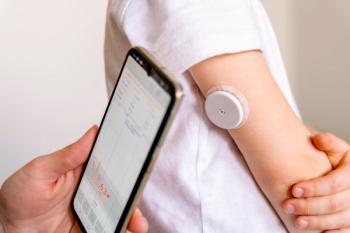
Enhanced Front Line Therapy for NDMM: Promising Results from the MajesTEC-7 Trial
Results from the initial safety run-in of MajesTEC-7 indicate that the combination of teclistamab, daratumumab, and lenalidomide in newly diagnosed multiple myeloma (NDMM) shows a manageable safety profile with early signs of efficacy.
Data from the first safety run-in from phase 3 majesTEC-7(NCT05552222), comparing the use of teclistamab in combination with daratumumab and lenalidomide (DR) versus DR and dexamethasone (DRd) in patients with newly diagnosed (ND) multiple myeloma (MM) who are ineligible for autologous stem cell transplant (ASCT) as initial treatment, demonstrates positive results that were presented at the 2024 American Society of Clinical Oncology conference (ASCO) Annual Meeting. In an interview with the Pharmacy Times, Salomon Manier, MD, PhD, associate professor of hematology at the University of Lille Hospital, explains the significance of these findings and their potential impact on future treatment protocols for patients with NDMM.
Pharmacy Times: What is the treatment regimen assessed in the phase 3 MajesTEC-7 trial, and how does this treatment sequencing compare to other MajesTEC trials?
Salomon Manier: Yeah, so we are presenting the safety run-in of majesTEC-7, the phase 3 MajesTEC-7 trial. So, the combination of treatment is teclistamab, daratumumab, and lenalidomide for the safety run-in cohort 1, the one with long follow up that we are reporting at ASCO this year. This will inform the randomized parts of the majesTEC-7 trial and this randomized part has 3 different arms. One is the same combination: teclistamab, daratumumab, and lenalidomide. The second is talquetamab, the other bispecific antibody targeting GPRC5D and CD3 with daratumumab and lenalidomide. And the control arm is DRd [daratumumab, lenalidomide, and dexamethasone], the standard of care treatment today.
Pharmacy Times: What is the current standard of care for patients with NDMM who are not intended or are ineligible for autologous stem cell transplant (ASCT), and how does the MajesTEC-7 treatment regimen compare in terms of safety profile?
Manier: So currently, the standard of care for patients who are transplant ineligible is the combination of daratumumab, lenalidomide, and dexamethasone. This has been approved based on the phase 3 MAIA trial some years ago, so it's an extremely good treatment. However, what we know is that all the patients will ultimately relapse, so there is a need for improving this front line regimen for transplant ineligible patients and to try to improve their outcomes. So, this is the goal of the majesTEC trial including the bispecific antibodies that have proven efficacy in patients with advanced disease.
And so, in terms of safety, what we show in this safety run-in cohort 1 is that the profile is quite good. The main side effects are hematological side effects and we observe CRS [cytokine release syndrome], but mostly grade 1—grade 2 in just 1 patient, and none in grade 3 or 4. And in terms of infections, 30% of the patients have a grade 3 or 4 infection, which is in line with what we can observe in the previous trials with teclistamab and other trials with front line regimen for transplant ineligible patients. So, the safety profile is quite good in the safety run-in cohort 1.
Pharmacy Times: Why might patients with newly diagnosed MM be designated as not intended or ineligible for ASCT?
Manier: So, there are several parameters to decide if the patients will be transplant eligible or ineligible. And then the question of the intention to transplant is a little bit different. So, the first main factor is age. We know that over the age of 65, and sometimes we can go up to 70 years old, there are too many complications and side effects of transportation. So, we avoid that, and the patients are designated transplant ineligible in that context. Then for patients who are younger, sometimes they can have comorbidities in some cases, and we will consider them not eligible for [ASCT] if they have an important comorbidity, even if they are younger. And for us the intention to transplant or not, I would say that in Europe, for younger patients who are eligible we tend to do the [ASCT] most of the time. In the US, sometimes it's delayed, and the [ASCTs] will be done at the second line of treatment, for example, but not immediately front line. So, the patients are not intended in that context.
Pharmacy Times: What are some of the current challenges in treating patients with newly diagnosed multiple myeloma who are not intended or are ineligible for ASCT and how does the MajesTEC-7 treatment regimen help to address these challenges?
Manier: The main challenge is that the patients will ultimately relapse. We know that despite the great improvements that we've made for the treatment of [MM] in the past 5 to 10 years, which is remarkable, it's still an incurable disease. And so, with the MAIA regimen, which is the standard of care treatment, the median PFS [progression free survival] is at 5 years—which is remarkable—but you know all the patients relapse at some point and sometimes become refractory to treatment after several lines of treatment. So, we need to improve and obviously the best way to improve the treatment is front line and trying to cure the patients [in the] front line is the goal of the of the research. So, the bispecific antibodies have proven their efficacy and the possibility to reach emerging negativity, even in patients with advanced disease. We've seen this in majesTEC-1, we’ve seen this in earlier relapse in majesTEC-2 in combination. So, they are very efficient drugs and combining them front line is potentially a way to reach a cure one day. This is you know what the challenge that majesTEC-7 is answering.
Pharmacy Times: What are next steps following the MajesTEC-7 trial results?
Manier: Here we have the results of the safety run-in cohort 1. The next step will be to do the randomized phase. So, it's now open and 1500 patients will be included in the randomized phase in the 3 different arms. We need to have the data. The co-primary endpoint is the PFS and the emerging negativity rates at 12 months. We need to have this data to validate that the treatment, which is the combination of bispecific antibodies, is more efficient than [DRd] and then perhaps it will become the next standard of care for those patients who are transplant ineligible or not intended. So, this is what we are looking for in the in the coming years.
Newsletter
Stay informed on drug updates, treatment guidelines, and pharmacy practice trends—subscribe to Pharmacy Times for weekly clinical insights.




















































































































































































































